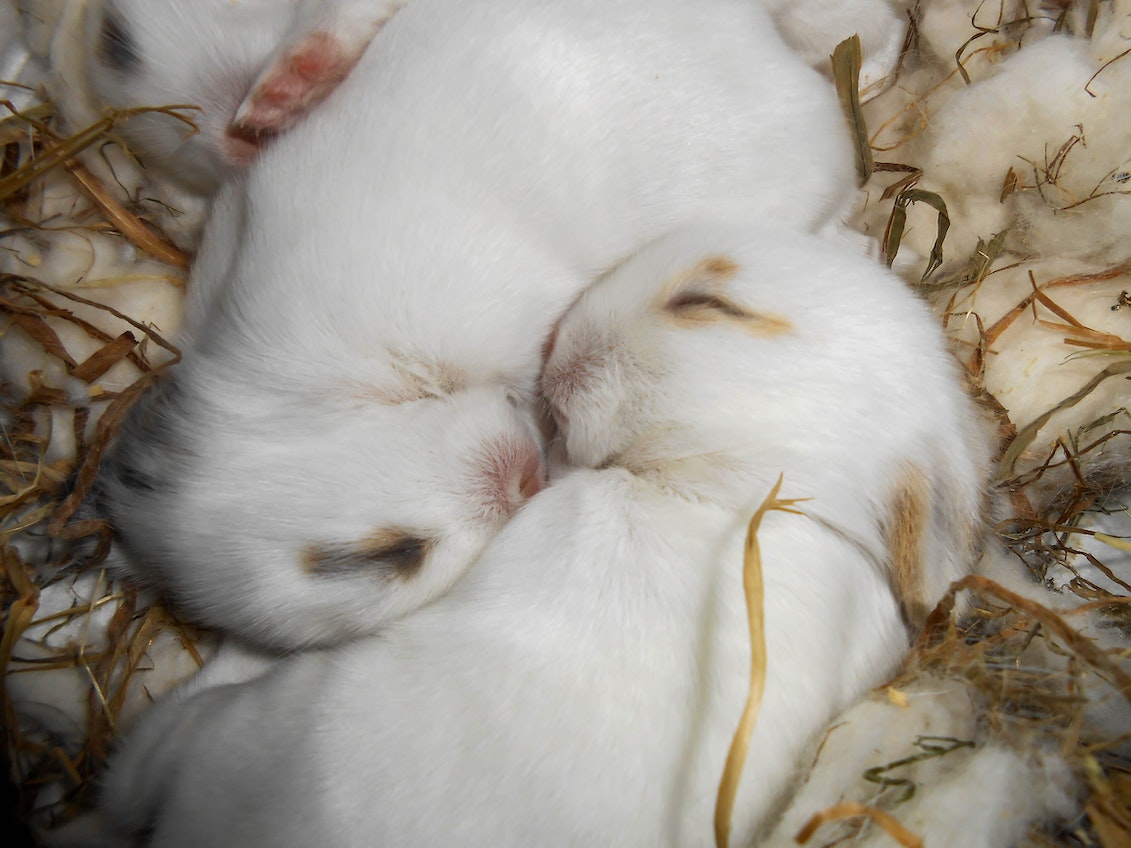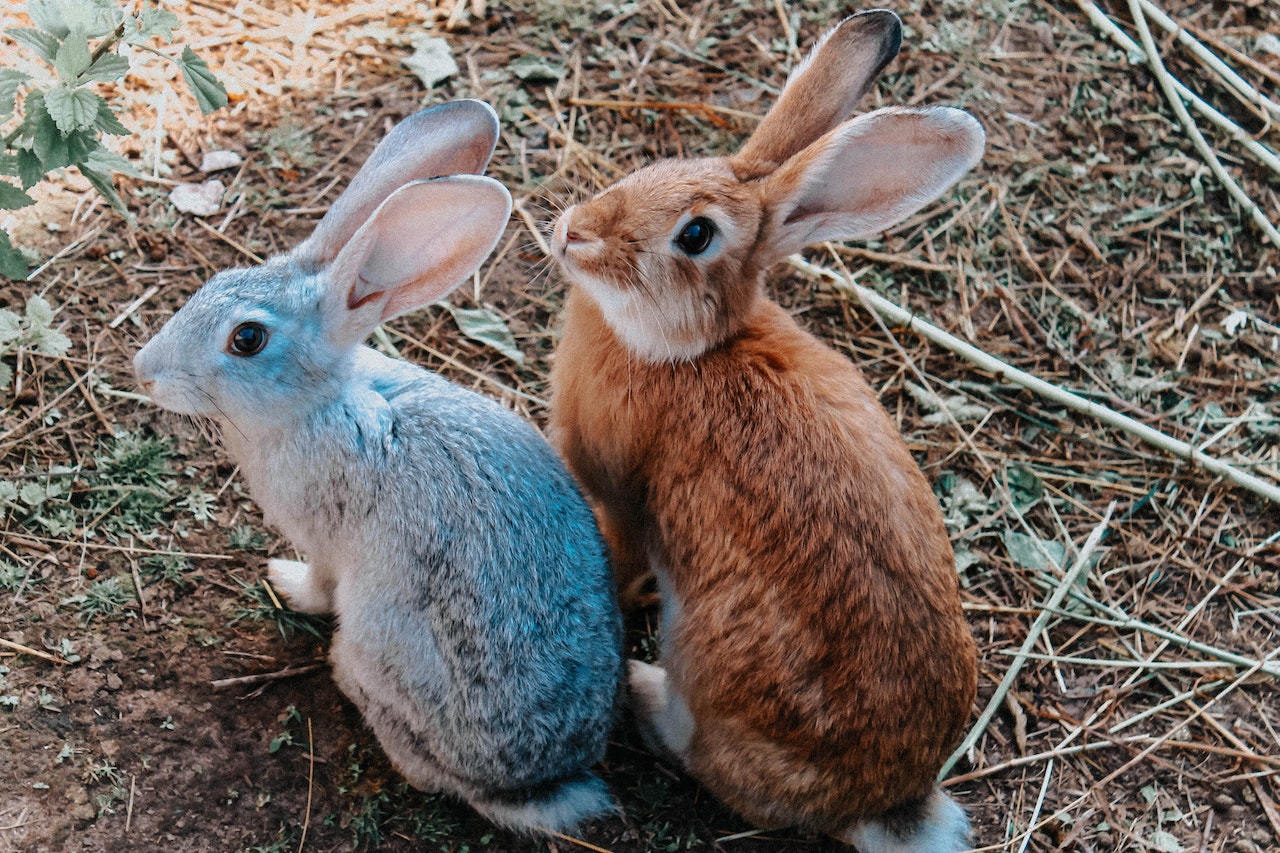Many small animals are only happy in company. Anyone who decides to keep social creatures such as rabbits, guinea pigs or budgerigars always decides to keep several animals. Because keeping long-eared bats, meerlis and co. individually is not species-appropriate - and therefore contrary to animal welfare. Of course it can happen over time that a member of the small animal pack dies or that an ornamental bird loses its beloved partner. If there is only one animal left, a suitable conspecific should be found as quickly as possible to drive away the loneliness of the bereaved. However, some keepers simply want to enlarge their existing group and add another rabbit or guinea pig. However, the merger requires a lot of tact. In the following we explain what you should consider when socializing small animals.

Matching character
If you want to integrate a rabbit into an existing pack, you should look out for a suitable long-eared rabbit at an animal shelter or animal welfare association. The chances of a successful reconciliation increase if the newcomer matches the other grumpy men in terms of gender, age, and personality. The easiest way is to socialize a castrated buck and a rabbit - these two almost always get along. In larger groups, the gender ratio should be balanced. It is important that the newcomer is well socialized and knows how to live with other rabbits. Hatchlings should be over 16 weeks old before they are allowed to move in with their new housemates.
What is the best way to socialize rabbits? Before the newcomer is placed with his conspecifics, he must first be quarantined for two weeks. This is to ensure that he does not bring any diseases into the rabbit enclosure. During this time, a fecal examination can be carried out and the. necessary vaccinations are administered if this has not been done in advance.
Then it's time for the merge. Since rabbits will defend their territory from intruders, the first encounter should be on neutral ground. A secure area on the balcony, in the bathroom or in the garden shed is ideal for this, for example.
community scent
The rabbits are placed simultaneously in the three to five square meter social enclosure . This must be free of any sources of injury, since the animals can dash around in panic and jump up during the first meeting. Cork tubes and little houses offer opportunities to retreat in this stressful situation, but should always have two exits so that a long-eared bat that has been hunted cannot be driven into a corner. Since smell plays an important role in rabbit communication, the newbie can be rubbed down with a little used bedding beforehand to create a kind of "communal scent". Perfume or deodorant is not suitable for this. Depending on their individual character, the rabbits will first sniff each other, maybe chase through the enclosure, jump in the air or briefly pinch each other's fur.

By so-called sitting up, the hierarchy is discussed with his intention to become chief long-eared. At some point one of the animals will submit with a gesture of appeasement and the fronts are clarified.
When the munchkins stop chasing each other and happily eat next to each other, the move to the common rabbit home can be prepared.
Frictions are possible
Guinea pigs also absolutely need at least one member of their own species at their side in order to be able to lead a happy rodent life. Keeping several females with a castrated male is recommended.
Other constellations are possible in principle, but require a little more background knowledge. The age is also important for the selection of the new addition: The animals should be about the same age to ensure that the socialization is as problem-free as possible. It makes little sense to put a lively young animal at the side of a quiet senior. If you want to add more furry friends to your existing pair of guinea pigs, it is best to take on two newcomers at the same time - this way none of the four-legged friends is pushed into the outsider role.
Since Meerlis also have to clarify the hierarchy first, the social enclosure must be large enough. A floor space of at least one square meter per guinea pig is advisable. Sufficient hay and green fodder can ensure a good mood in the run. During the merge, you should keep an eye on your animals for several hours. Wild chases, minor friction and loud squeaking are possible - this behavior does not have to be stopped. Even minor bite wounds on the ears are unproblematic and usually heal on their own. Only if a guinea pig is massively attacked and bitten on the back by its fellow guinea pigs must the opponents be separated immediately. After a few days you can start a new socialization attempt. If this does not work either, the animals must be permanently separated - and the individual animal needs a new partner.

A socialization is not always crowned with success. Some animals just don't fit together and shouldn't be forced to live together. But what about cross-species husbandry? Can guinea pigs and rabbits be happy together?
Long-Ear plus Meerli?
The answer is: yes.
These are different species that would never come into contact with each other in the wild. Nevertheless, it is basically possible to keep long-eared bats and meerlis together in one large enclosure. The prerequisite for this is that each animal has at least one conspecific at its side. For a guinea pig, a rabbit is no substitute for another Meerli - and vice versa. The animals communicate completely differently and simply do not understand each other. They would get lonely next to each other if they didn't have a conspecific close by to cuddle, play and clean.
Socializing chinchillas is a bit trickier. In their homeland, the South American rodents live together in large groups in which there is a clear hierarchy. Integrating an animal into an existing group or getting several chinchillas to get used to each other at the same time can therefore be time-consuming. It is easier to socialize just two animals, such as a female and a castrated male of the same age. The younger the animals are when brought together, the better the chances of success.
Patience is required
The newcomer is first placed in a cage and then, after the quarantine period has expired, meets his future partner in the common run. However, the fur noses should be allowed to sniff each other before they are placed in the enclosure. If they react visibly negatively or even aggressively, it is better to get to know each other cage by cage. Only when the chinchillas remain calm on the fence can a new attempt be made in the run. Smart, social animals like rats should never have to live alone either. For a successful socialization, the newcomer should be at least ten weeks old. Both same-sex and mixed-sex groups can be held. If males and females live together, the males must of course be castrated to avoid unwanted offspring. It is ideal to integrate two pet rats into an existing pack - because then no animal has to sit alone in the cage during the necessary quarantine period. How long the rodents socialize depends very much on the individual character of the animals and their housing conditions. Patience is required here: It can take several days or even weeks for all the rats to harmonize with each other. But persevering is worth it. After all, if you want to give sociable small animals like rats a species-appropriate life, you have to offer them a family connection.









